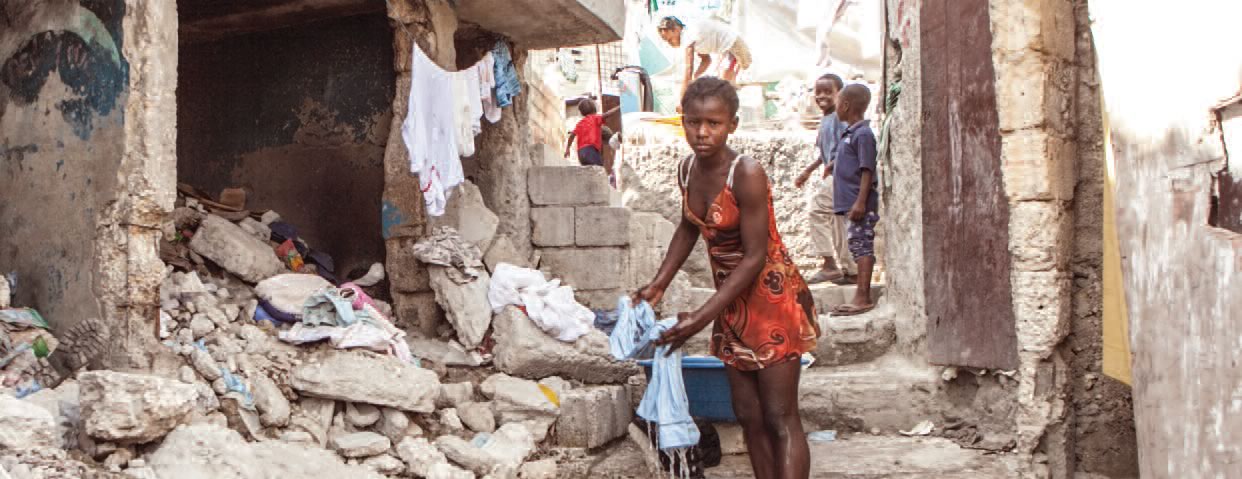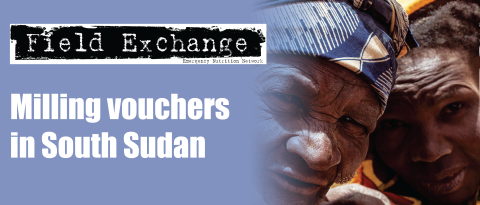Treatment of SAM and MAM in low- and middle-income settings: a systematic review
Summary of research1
 Location: Global
Location: Global
What we know: Worldwide, 33 million children under 5 years are moderately malnourished and 19 million are severely malnourished. The impact of existing care packages to manage SAM has not been widely researched. The package for MAM treatment is not well understood.
What this article adds:The effectiveness of inpatient and outpatient approaches to treating SAM and approaches to managing MAM were evaluated in a systematic review. Fewer high quality studies than expected were found, limiting analyses. Case fatality rates for inpatient SAM treatment ranged from 3.4% to 35%. SAM children managed using RUTF were 51% times more likely to recover than standard care. Moderately malnourished children responded better to RUSF than CSB. Standardised case definitions, reporting outcomes by agreed time intervals and data disaggregation would improve meta-analysis potential. Studies in a broader range of contexts and including long term follow up are needed.
Globally, approximately 33 million children under five years of age are affected by moderate acute malnutrition (MAM), defined as a weight-for-height z-score (WHZ) between -2 and -3, and at least 19 million children under five by severe acute malnutrition (SAM), defined as a WHZ of <-3. For children with SAM, the risk of death is approximately 10-fold higher compared to children with a z-score ≥ – 1. Based on an analysis by UNICEF, WHO and the World Bank, 32 of 134 countries for which there were data on prevalence of acute malnutrition (WHZ <-2) had a prevalence of 10% or more – a threshold that represents a “public health emergency requiring immediate intervention”. This analysis also showed that, since 1990, prevalence rates of wasting (acute malnutrition, WHZ <-2) have declined three times more slowly than for stunting (chronic malnutrition, height-for-age z-score <-2), decreasing by 11% and 35% respectively.
Since the early 2000s, the products used to deliver nutrients for management of SAM and MAM and the approaches used to target and deliver them have been evolving rapidly. Researchers recently undertook a systematic review in order to evaluate the effectiveness of approaches to managing SAM, including the WHO protocol for inpatient management, and UNICEF/WHO endorsed community-based management using Ready to Use Therapeutic Food (RUTF), as well as the effectiveness of approaches to managing MAM that involve Ready to Use Supplementary Foods (RUSF) and fortified foods such as Corn Soya Blend (CSB).
The review focused on children under five years in low- and middle-income countries. In addition, the study team aimed to identify gaps in the literature and to generate the effect estimates necessary for including these interventions in the Lives Saved Tool (LiST). LiST models the reduction in child deaths by specific causes associated with increasing coverage of individual interventions. Recent mortality rates and cause of death data for newborns, infants, and children are incorporated, by country, using estimates established by the Child Health Epidemiology Group (CHERG).
Methods
The research team developed comprehensive search strategies for the following databases: Medline, Embase, Web of Science, WHO regional databases and the Cochrane library and conducted hand searches for sources of grey literature, including the Emergency Nutrition Network and Epicentre websites, Grey Literature Review and the World Bank website.
MAM was defined as WHZ between -2 and -3 standard deviations (SD), weight-for-height (WFH) 70-80% of the NCHS or WHO reference median or mid-upper arm circumference (MUAC) of 115-125mm. SAM was defined as WHZ <-3 SD, WFH <70% of the median NCHS or WHO reference or MUAC <115mm or oedema.
The search identified 10,557 titles. Screening of these titles, full text review and data abstraction was done independently by two team members and then matched. A total of 14 studies were included in the final meta-analysis.
The meta-analysis was conducted using RevMan 5.2®. The team applied generic inverse variance methods to all analyses and used a random effects model in all cases; summary estimates are presented as relative risk (RR) or mean difference (MD) and 95% confidence intervals (CI). Study quality was assessed using CHERG adaptation of GRADE criteria. A Delphi process was undertaken to complement the systematic review in estimating case fatality and recovery rates that were necessary for modelling in the LiST.
Results
Case fatality rates for inpatient treatment of SAM using the WHO protocol ranged from 3.4% to 35%. For community-based treatment of SAM, children given RUTF were 51% more likely to achieve nutritional recovery than the standard care group2. For the treatment of MAM, children in the RUSF group were significantly more likely to recover and less likely to be non-responders than in the CSB group. In both meta-analyses, weight gain in the intervention group was higher, but although statistically significant, these differences were small.
The review was unable to utilise a substantial proportion of studies due to inconsistencies in admission criteria, variability in the definition of acute malnutrition (including the use of weight-for-age to assess nutritional status), and irregularities in how data were reported. In order to strengthen understanding of the effectiveness of interventions, through the use of meta-analysis, there should be standard case definitions and reporting of outcomes at standardised time intervals. Admission criteria should be based on the WHO definition of
acute malnutrition, or children meeting these criteria should be presented in a disaggregated analysis.
Further high quality impact studies of approaches to managing SAM and MAM are needed, particularly studies that reflect a broader range of settings where these conditions are prevalent, including a range of geographic locations and areas with different disease prevalence (e.g. HIV). Though this area of research can present challenges for intervention studies, there are study design options and data analysis techniques that allow for high quality research. Where randomised controlled trials are not feasible, another option would be to employ a stepped-wedge design for research on community-based management of SAM or MAM.
This meta-analysis was constrained with respect to the types of outcomes that could be pooled. Length of stay, relapse (requiring re-admission to the hospital), default rate, sustained recovery and cost-effectiveness were not routinely measured, but are essential factors to consider in programme planning. Furthermore, all but one of the studies included in this review follow children for a relatively short period of time, providing little insight into long-term effects.
More follow-up studies are needed to illuminate long-term effects on developmental outcomes, stunting, and the transition back to a home diet. Standardised follow-up intervals over a longer time period and reporting on a wider range of outcomes would allow for higher quality meta-analyses and a more robust understanding of the intervention effects. Similarly, trials are needed to compare different approaches for the management of MAM that consider local context, as a ‘one-size-fits all’ approach is not appropriate.
While food supplementation is necessary in humanitarian emergencies and chronic food insecurity contexts, acute malnutrition is not confined to situations of conflict or famine. In relatively more stable situations, further research is needed on preventive approaches that address upstream determinants of acute malnutrition. As the body of literature grows, it will also be important to disaggregate meta-analyses according to context. Therefore, greater geographic representation is needed, as well as studies designed to explore the impact of factors that likely affect the individuals’ treatment outcomes, such as HIV status and household food insecurity, in addition to studies designed to tease out the elements of successful programmes, beyond the choice of commodity.
1Lenters. L et al (2013). Treatment of severe and moderate acute malnutrition in low- and middle-income settings: a systematic review, meta-analysis and Delphi process. BMC Public Health 2013, 13(Suppl 3):S23 http://www.biomedcentral.com/1471-2458/13/S3/S23
2Standard care entailed treatment in an inpatient facility until complications resolved, with the subsequent provision of CSB for feeding the child at home.


